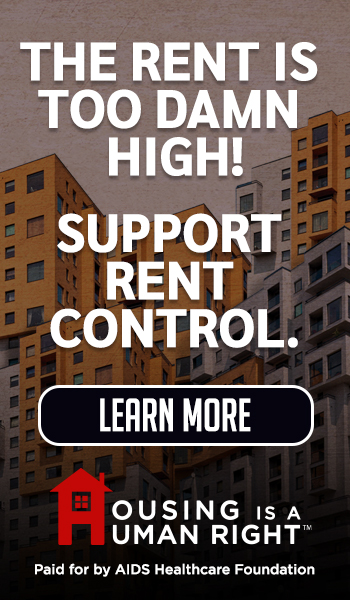Comments
THE VIEW FROM HERE - In May 2025, we explained that Los Angeles is doomed. See The One and Done Rule Dooms Los Angeles Generally, a decent analysis of a problem yields its solution, unless the situation has passed the point of no return. Because Germany diverted its troops to attack Stalingrad in order to insult Joseph Stalin because the city bore his name, Germany lost the entire war. See Stalingrad Turned WWII Around On the other hand, a good argument could be made that Hitler’s listening to Joseph Goebbels’ terminal racism had already doomed Germany similar to how Stephen Miller’s vile racism has needlessly set in motion a backlash which will bring down Donald Trump. See Miller’s Racism Destroys Trump’s Presidency These hyper-links make for a long read. For those who have the stamina, the most basic explanation of how Los Angeles got into this nightmare is the 1915 Study of Los Angeles’ Street Traffic Conditions This treatise explains the unchanging relationship of math, topography and finance.
Los Angeles Had One Commodity to Sell – Land
From its outset, Los Angeles’ greatest commodity was land. The American dream was a detached home on its own lot with a white picket fence. The fortuitous confluence of unique factors made the American Dream of a single family home within an urban area rather than in the rural countryside a reality. There was Ford’s mass production of the automobile along with the Theodore Roosevelt’s Presidency and its trust busting success on the top of 40 years of industrialization which created a middle class which could afford a home. Average national household income had grown from $1,200 in 1880 to $2,200 in 1910, but City of Los Angeles grew from 11,183 ppl in 1880 to 319,198 ppl in 1910 and to over one million by 1930 (1,238.048). In 1915, the cost of living index in New York City was 100 but only 87 in Los Angeles. Also, cheap land plus by 1905 the Edison Trust in New York forced much of the nascent film industry to Los Angeles, where they could film year round.
By 1910, Los Angeles had a crisis – traffic congestion in downtown was unbearable because it had been built for the pre private auto age. Delivery trucks were still allowed to stop in main streets to unload, trolleys took up too much space and they were increasingly dangerous. For a trolley to go both directions took up at least 3 lanes and since they ran on tracks, they stopped in the middle of the road to load and unload passengers who would get on and off the trolleys in the middle of auto traffic lanes. By 1915 the city had commissioned the Study of Street Traffic Conditions (Caution it loads slowly) Unless one understands the three immutable factors of topography, density, and finances, one is subject to believing a gazillion nonsense myths about Los Angeles, traffic congestion, density, and cost of living.
In 1915, the city’s civil engineers warned that all land use types had to expand outward in unison and we absolutely, positively should not separate business - offices districts from far away bedroom communities. Due to massive state and city hall corruption, Los Angeles did the exact opposite, using the corrupt Community Redevelopment Agency (CRA) to make DTLA extremely dense, e.g., Bunker Hill, while building bedroom communities in the valleys. One crucial aspect of this corruption was to sell people on rapid mass transit to link the suburbs with the core areas like DTLA and City Century. Wall Street made fortunes on the horrendous financing for the high rises and then for the subways and fixed rail transit which always made traffic worse. The 1915 Study showed that mass rapid transit was a fraud to make a few people vastly wealthy and everyone else poorer. After 2000, Angelenos slowly became poorer and poorer as more and more of Angelenos dollars for high mortgages and high office rents plus the billion in mass transit costs flowed upward to Well Street.
Los Angeles’s economy became addicted the development dollars even when the developers were building dreck. Density always increases land values. As LA became more crowded and land values increased, property taxes flowed into the city budget and they used the funds to support more dense multi-unit housing. By 2010, it was obvious that soon LA would lose its Family Millennials who would move away from LA to places where cost of living was lower and they could have a single family home – the exact same formula which had brought millions to Los Angeles was now driving Family Millennials and tehn Gen Zers out of LA, but Wall Street’s greed never stopped. As we see from SB 79, the greed gets worse each day. Los Angeles is like a narco-drug state which cannot give up its cocaine production without causing financial collapse. When the bubble bursts, assessed valuations of property taxes will fall so that landowners will petition for lower property taxes. With property tax revenue plummeting, but with huge commitments to pay off Wall Street’s funding mass transit, the city will be bankrupt.
SB 79 will only make matters worse as it attacks the only segment of real estate which keeps some Family Millennials in LA – a few R-1 neighborhoods. R-1 homes not only provide for the American dream for raising a family, they are the main way that American families build equity and inter-generational wealth. It would take a myopic family to buy into any LA single family areas when tomorrow SB 79 may authorize an overbearing poverty project next door.
LA has a choice: Curtain densification now and lose a major portion of LA’s economy or plunge ahead towards a horrendous bubble-crash. Wall Street knows what’s coming which is why its loans money to the city so that city will loan it to developers. When developers default on their loans, the city still has to repay Wall Street. The next step will be a Federal bail and LA will be ruled from Congress.
Because no one will admit the problem, LA cannot be saved.
(Richard Lee Abrams is a former Los Angeles-based attorney, an author, and political commentator. A long-time contributor to CityWatchLA, he is known for his incisive critiques of City Hall and judicial corruption, as well as his analysis of political and constitutional issues. Abrams blends legal insight with historical and philosophical depth to challenge conventional narratives. A passionate defender of civic integrity and transparency, he aims to expose misuse of power and advocate for systemic reform in local government. You may email him at [email protected])
















